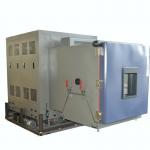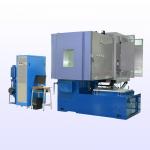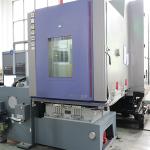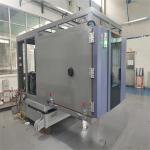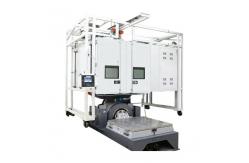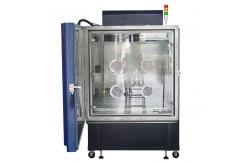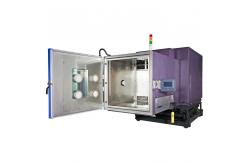In the complex and demanding realm of industrial operations, the
reliability and performance of industrial control equipment are non
- negotiable. The combination of a Random Vibration Test Machine
and a Climatic Test Chamber emerges as a crucial and sophisticated
solution tailored to the unique requirements of this equipment.
This integrated system enables manufacturers, quality control
teams, and researchers to subject industrial control equipment to a
wide gamut of mechanical vibrations and climatic conditions,
closely mimicking the harsh and variable environments they
encounter in real - world industrial settings. This advanced testing setup is meticulously designed for industrial
control equipment, which encompasses a vast array of devices such
as programmable logic controllers (PLCs), distributed control
systems (DCS), human - machine interface (HMI) panels, industrial
sensors, and actuators. The primary objective is to comprehensively
evaluate how these components perform and endure under the combined
stress of random mechanical vibrations and diverse climatic
factors. By simulating real - world scenarios like the unpredictable
vibrations from industrial machinery, the extreme temperature
variations in different manufacturing processes, and the humidity
fluctuations in various industrial environments, manufacturers can
pinpoint potential weaknesses in the design, refine product
quality, and guarantee the long - term reliability, functionality,
and safety of industrial control systems. This is vital as any
failure in industrial control equipment can lead to production
disruptions, safety hazards, and significant financial losses. - Realistic Random Vibration Simulation
- The random vibration test machine is engineered to generate a broad
- spectrum random vibration profile, typically spanning a frequency
range from 2 Hz to 2000 Hz. This wide range is essential as it can
accurately replicate the complex and erratic vibration patterns
that industrial control equipment is exposed to in actual
industrial environments. The machine precisely controls the
vibration power spectral density (PSD), enabling the precise
reproduction of different levels of random vibration intensity.
- The random vibration generation is based on state - of - the - art
algorithms and control systems. These ensure that the vibration
profile closely mimics the real - world vibrations, which may stem
from multiple sources such as rotating machinery, reciprocating
engines, and vibrating conveyors. This realistic simulation is
crucial for identifying potential weaknesses in the equipment's
structure, internal components, and connections that could be
affected by these complex vibration inputs.
- Multi - Axis Vibration Capability
- It has the ability to generate vibrations in multiple axes, usually
three - axis (X, Y, and Z), providing a more realistic
representation of the mechanical stresses experienced by industrial
control equipment. In industrial settings, equipment often endures
vibrations in different directions simultaneously. For instance, a
DCS cabinet mounted on a factory floor may experience vertical
vibrations from the floor's movement, horizontal vibrations from
nearby machinery, and lateral vibrations during equipment
installation or maintenance. The multi
|
